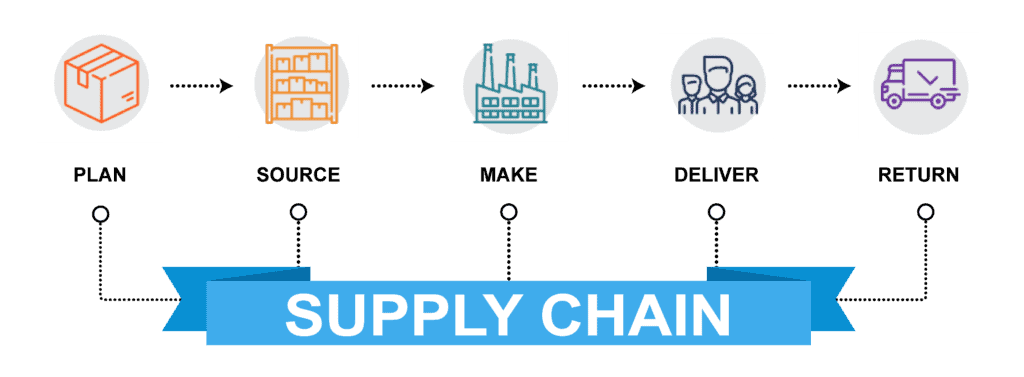Are Supply Chain and Logistics the Same Thing?

Supply chain? Logistics? If you’ve ever wondered what the difference is, you’re not alone. A quick Google Images search of either phrase will spit out almost identical results: a jumble of transportation icons, hub-and-spoke diagrams and process graphics featuring overlapping industry terminology.
Further complicating matters, the terms “supply chain” and “logistics” are frequently used interchangeably. Some sources define logistics as a stage, or step, in the supply chain, while others suggest that logistics and supply chain are one and the same. With so many conflicting interpretations, no wonder there’s confusion.
Nevertheless, the answer is quite simple and is best illustrated by considering each system in terms of its most basic functions. In other words, what is it trying to achieve?
- “Supply chain” is concerned with making and providing a good to an end-user.
- “Logistics” control the flow of material, both at movement and at rest, until that (supply chain) good reaches its ultimate destination.
To further our understanding, let’s take a deeper look at each of these systems independently.
What is the Supply Chain?
The supply chain is a framework that links together the multiple functions and processes required to create a good or service and provide it to an end-user. Investopodia defines the supply chain as “a network between a company and its suppliers to produce and distribute a specific product to the final buyer.”
The goal of supply chain management is to achieve competitive advantage and create value by making strategic decisions at each of the steps. By managing and streamlining the flow of materials, from raw inputs to finished goods, a supply chain manager aims to lower costs and establish the most efficient production cycle possible.
TechTarget | SearchERP define the stages of supply chain management as Plan – Source – Make – Deliver – Return.

In the product life cycle of a consumer good, these five stages correlate to:
- Stage 1: product development & innovation
- Stage 2: obtaining raw materials from suppliers
- Stage 3: manufacturing a good
- Stage 4: distribution to retailers and end-users
- Stage 5: coordinating the return of defective or unwanted products
In this model, Stage 4 (Deliver), “pertains to logistics”, speaking to the roles of transportation, inventory management and warehouse management. And while this definition is accurate, it is also incomplete, because the scope of logistics encompasses so much more.
What is Logistics?
In the textbook Supply Chain Logistics Management, Michigan State University professors describe logistics as “activities – transportation, warehousing, packaging and more – that move and position inventory.” Logistics encompasses all of the movement of goods between each of the different supply chain organizations.
Beyond the moving of product, logistics stores goods until they are needed. Using warehouse management systems, logistics provides critical inventory management and order fulfillment functions. By finding ways to move product faster, and for less money, logistics increases end-user satisfaction and improves the customer experience.
How are Supply Chain and Logistics Related?
Returning to our supply chain model, logistics is undeniably key to Stage 4 (Deliver). But logistics goes far beyond the activities of a single stage in the supply chain, or even those of several stages. Logistics is, in fact, what makes the entire supply chain possible. Like the chain on a bike, logistics connect each stage of the supply chain and create momentum, driving the entire system forward.

From raw materials at their point of origin, to the distribution, and return, of finished products to their ultimate destination, logistics coordinates and controls the flow of goods. The blog, We Are the Practitioners, sums it up perfectly: “logistics is the fine art of getting stuff from Point A to Point B”.
The Supply Chain Logistics Management textbook offers a somewhat more eloquent definition, describing the role of logistics as “synchronizing the supply chain”. Logistic activities are what tie together and power supply chain systems. And logistics done well helps supply chain managers achieve their goals by creating efficiencies and cost-saving opportunities.
Are you looking for a logistics partner to enhance your supply chain and save you money? MTE Logistix has the facilities, equipment, technology and expertise to meet virtually any need.
Give us a call at 780-944-9009 or email info@mtelogistix.com to learn what MTE can do for you!
